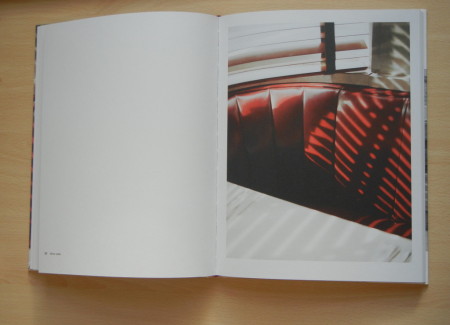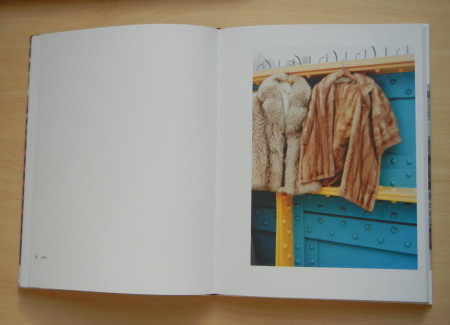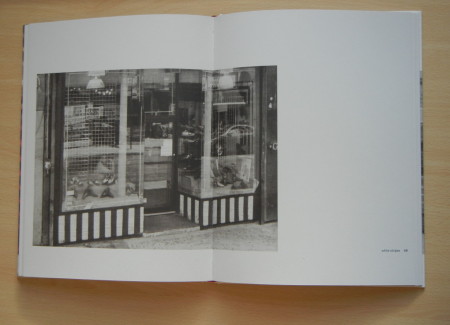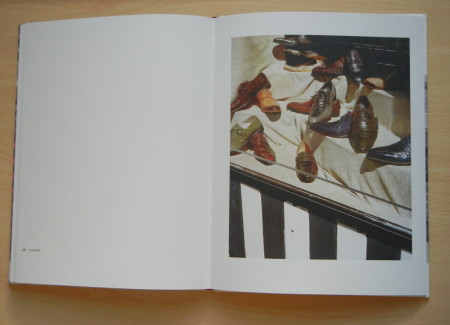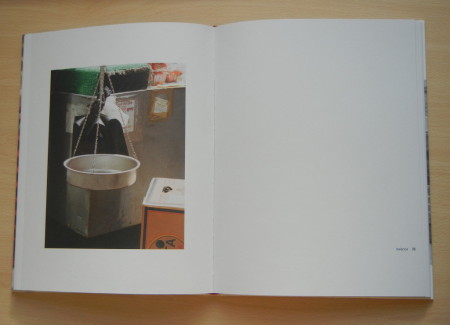JTF (just the facts): Published in 2013 by Distanz Verlag (here). Hardcover, 136 pages, with 31 black and white and 28 color photographs. Includes an essay by Matthais Harder and a thumbnail image summary. (Spread shots below.)
Comments/Context: It probably never occurred to the folks at Google that their car-mounted mapping of major cities and landmarks called Street View would become such a rich treasure trove of source material for visual artists. With the benefit of hindsight, we can now see that the first wave of artistic use of this vast archive came in the form of appropriation and recontextualization of these images, of sifting, selecting, cropping, and reworking the ostensibly automatic and anonymous photographs to highlight the unexpected nuances of what had been documented (think Doug Rickard, Michael Wolf and others). As seen in this smart book, Viktoria Bischtok’s use of GSV signals a second wave, where the inherent nature of mechanical sight is being analyzed and reconsidered. In a certain way, it’s a shift from an examination of content to an examination of process.
Binschtok’s book is organized into pairs (and a few triplets) of images, where a black and white Street View shot (all from New York in this particular case) is paired with a color photograph of the same location by Binschtok, creating a back and forth rhythm of repeats and variations. What quickly becomes evident is the difference in approach: the black and white GSV images are all the same – slightly elevated views of sidewalks and street corners, with inadvertently captured pedestrians slightly blurred to protect their identities, while Binschtok’s color images are close up studies of details and surfaces, framed with attention to composition, contrasts of texture, and richness of hue. Each pairing is a compare and contrast proof of the difference between machine and human seeing, between digital and analog, and between the universal and the specific. There is also a sense of time dilation, of the elapsed weeks or months between the GSV image and Binschtok’s visit, the scene often having changed in subtle but identifiable ways.
In many ways, this project is akin to two photographers going out together for a day of shooting and coming back with radically different images of the same subject matter. But in this case, Binschtok’s partner was a surveillance machine, making the contrasts between their output (and the underlying intent of their working processes) all the more thought provoking.
Collector’s POV: Viktoria Binschtok is represented by KLEMM’S in Berlin (here). Her work has yet to reach the secondary markets, so gallery retail remains the best/only option for those collectors interested in following up.



